New Battlefield in AI Chips: Tech Giants 'Rush' into CPU Market
-
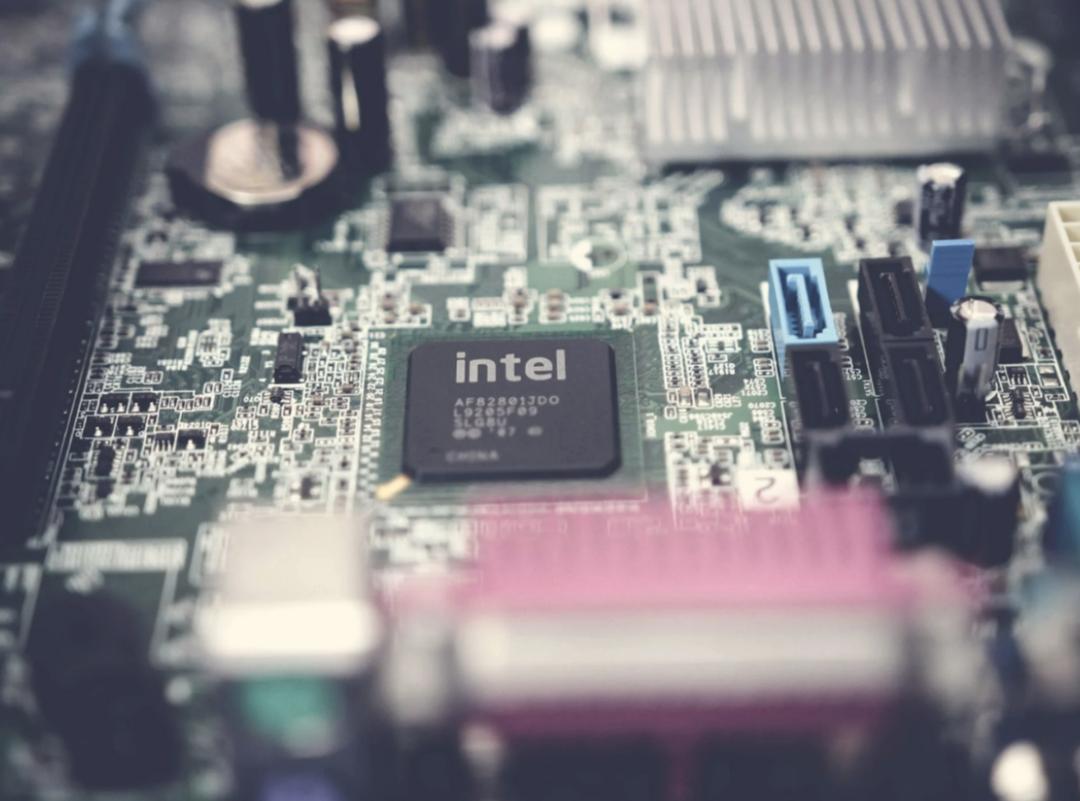
On October 26 local time, after the U.S. stock market closed, Intel released its third-quarter financial report.
Although Intel's revenue and adjusted earnings per share far exceeded expectations, its performance during the reporting period was weaker compared to the same period last year, with declining revenue from its main business.
Intel admitted, "The overall market size for PC processors is shrinking, and the company faced strong competitive pressures this quarter."
What’s more alarming is that Intel’s competitors are aggressively targeting its core territory—the CPU processor market.
According to reports, NVIDIA and AMD are quietly developing Arm-based CPU chips, Apple recently unveiled its M3 series chips overnight, and Qualcomm, not to be outdone, launched the Snapdragon X Elite PC processor, boasting that its new Oryon CPU outperforms the i9-13980HX in single-threaded performance.
Additionally, tech giants like Microsoft, Honor, Lenovo, Dell, and HP have all announced plans to release computers with Arm-based chips next year.
Why, despite AI processors seeming like a more promising market, are all major chip giants rushing into the PC CPU sector, which appears to be a 'sunset industry'?
For a long time, the PC chip market has been dominated by two major camps: x86 architecture, led by Intel and AMD, and Arm architecture, primarily controlled by Apple.
Recently, however, the chip industry has seen intense competition. Reports indicate that Nvidia and AMD, with Microsoft's support, are developing Arm-based PC CPUs for Windows, potentially launching as early as 2025 to directly challenge Intel's x86 stronghold.
Following this news, Intel's stock price dropped, while Nvidia and AMD's shares rose by 3.84% and 4.89%, respectively. Although Nvidia's plans remain unconfirmed, the company—already dominant in AI, high-performance computing, and consumer GPUs—reportedly aims to expand into Arm-based Windows PC processors.
Over the years, many companies, including Nvidia and AMD, have attempted to enter the PC processor market but failed to shake Intel's dominance. Only Apple has posed a real threat, notably with its Arm-based M1 chip three years ago, ending a 15-year reliance on Intel and breaking its PC 'monopoly.'
Moreover, Apple's in-house developed chips have provided the Mac series with significantly longer battery life and faster performance, far exceeding that of Intel processors.
It's no surprise, then, that since Apple introduced its self-developed M1 chip for Mac computers, the company's market share has nearly doubled in three years.
In response, Intel CEO Pat Gelsinger sounded the 'alarm bell' at Intel, openly mentioning Apple's newly launched M1 chip during an employee meeting and stating, 'In the future, we must be this good.'
Two weeks ago, Apple officially unveiled its latest M3 series chips—including the M3, M3 Pro, and M3 Max—at its 'Scary Fast' themed event. The company also released new MacBook Pro and iMac models equipped with the M3 series chips, claiming they are twice as fast as the 24-inch iMac with the M1 chip.
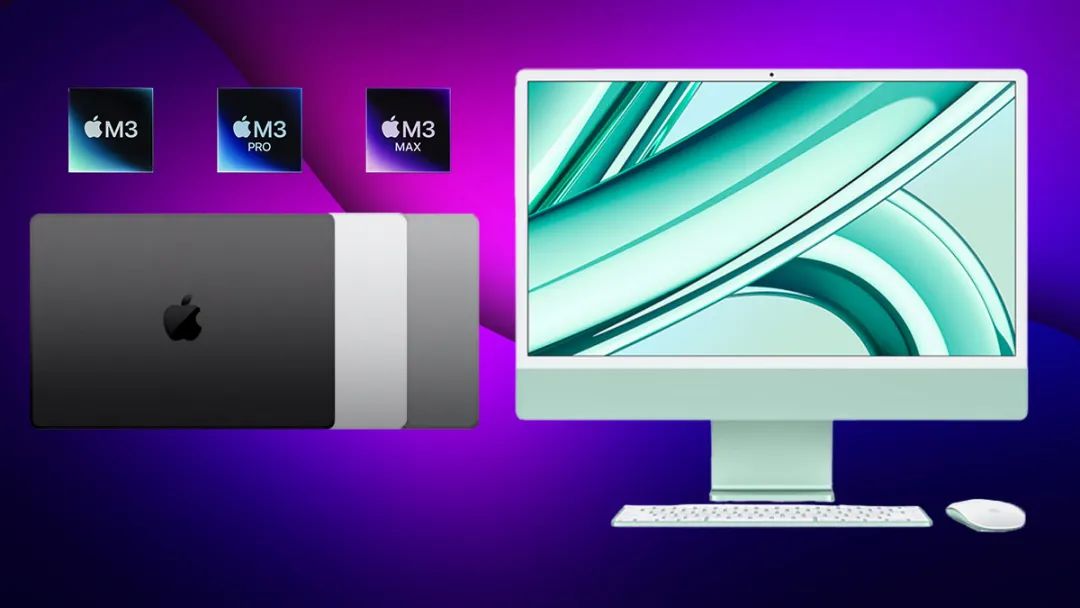
Additionally, semiconductor giant Qualcomm is accelerating its entry into the PC chip market, aiming to compete with Intel and Apple for market share.
During the recent Snapdragon Summit, Qualcomm unveiled the Arm-based Snapdragon X Elite chip for Windows laptops. This chip outperforms Intel's i9 and Apple's high-end Arm-based M2 chip in gaming and can handle AI operations, processing large language models with up to 13 billion parameters.
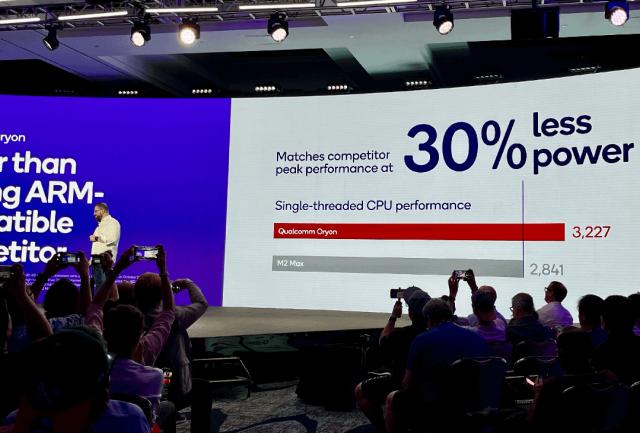
Qualcomm's new Oryon CPU surpasses competitors in speed and energy efficiency | Geek ParkQualcomm CEO Cristiano Amon also stated that future laptop processors will gradually transition to Arm architecture, directly challenging Intel's dominant x86 architecture.
Furthermore, tech giants like Microsoft, Honor, Lenovo, Dell, and HP have joined the competition, announcing plans to launch computers with Arm-based chips next year.
Although only Apple's proprietary designs have made 'substantial' progress so far—capturing over 10% of industry shipments—as noted by The Motley Fool, 'if these new Arm-based chips succeed, even moderately, it would be devastating for Intel.'
In response to the 'CPU battle' initiated by multiple competitors, Intel CEO Pat Gelsinger urged the market to remain 'calm.'
He stated, 'Historically, ARM chips haven't gained much traction in the market. While there have been some shifts in CPU and accelerator market share over recent quarters, by Q4, market trends are normalizing.'
He added, 'Currently, both ARM and Windows client alternatives have been relegated to relatively insignificant roles in the PC industry. Strategically, Intel takes all competition seriously. But tactically, we don’t view these challenges as particularly significant.'
Gelsinger also revealed Intel's 'Four Years, Five Nodes' plan to enhance chip manufacturing processes and counter competitors. The plan includes mass-producing chips using EUV lithography (the most advanced semiconductor technology) at its Fab 34 facility in Leixlip, Ireland, with progress already made this quarter and potential to match TSMC's manufacturing tech by 2025.
In fact, Arm PCs are not a new threat—the competition between Arm and x86 architectures began as early as the last century.
In 1978, Intel's x86 architecture debuted with the 8086 processor, gradually becoming synonymous with personal computer CPUs and establishing a vast 'business empire' for Intel.
Due to various historical reasons, AMD became the only company authorized by Intel to produce x86 architecture chips, solidifying the duopoly's dominance in the PC chip industry for decades.
In the 1980s, British company Acorn (the predecessor of Arm) designed a lower-power Arm architecture chip compared to x86 and attempted to run it on PCs, but it struggled against x86's 'hegemonic' position at the time.
However, it wasn't until the rise of smartphones that Arm architecture found its 'comfort zone.'
For a long time afterward, x86 was widely considered suitable for PCs and servers, while Arm architecture was better suited for mobile devices—both coexisting peacefully. This balance was disrupted only when Apple developed its Arm-based M1 chip.
Interestingly, Microsoft executives also took note of the processing efficiency of Apple's Arm-based chips and expressed interest in achieving similar performance.
Moreover, Microsoft seems to believe that Arm PCs will occupy a significant market share in the future. Last month, it announced the launch of the "Arm Advisory Service for Developers."
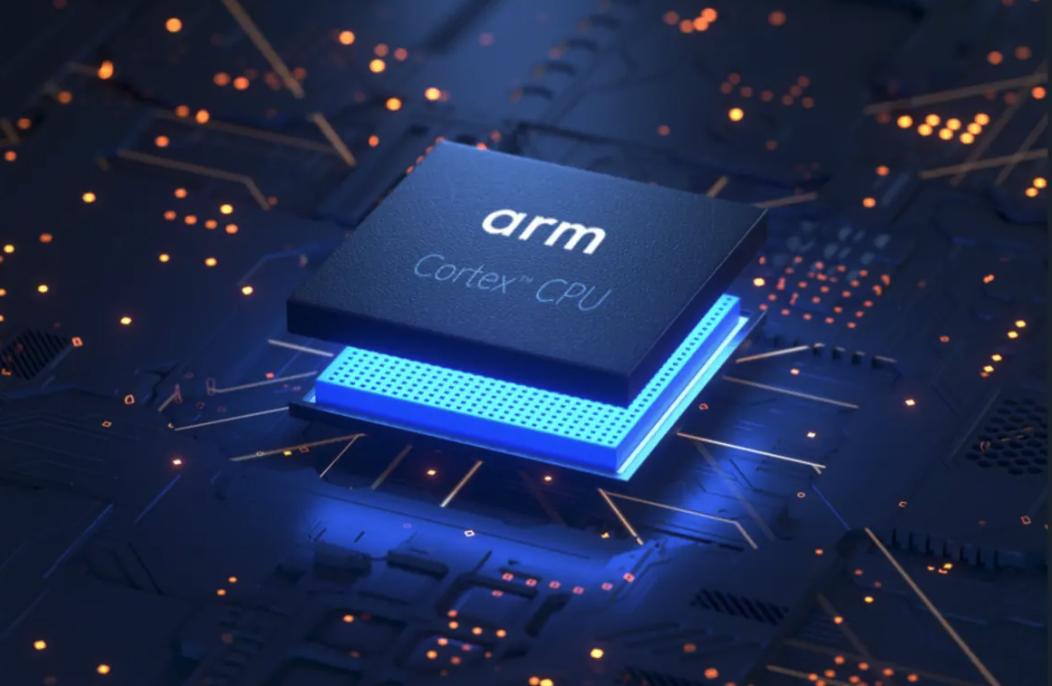
ARM architecture CPUs continuously challenging Intel | ARMIn fact, as early as 2016, Microsoft commissioned Qualcomm to lead the transition of the Windows operating system to the Arm processor architecture. Since then, Qualcomm has held the "exclusive" right to produce chips for Windows laptops.
However, the "exclusive" agreement between Qualcomm and Microsoft regarding Windows chip design is set to expire in 2024, and Microsoft appears to be encouraging other companies to enter the Arm-based system market.
Microsoft's approach has always been straightforward: it does not want to rely on a single chip supplier, whether it's Qualcomm now or Intel in the past.
Jay Goldberg, CEO of financial and strategic consulting firm D2D Advisory, stated, "Microsoft learned from the 1990s experience—they don't want to rely on Intel again or any single supplier. If Arm succeeds in the PC chip market, they won’t let Qualcomm be the sole supplier."
For Microsoft, one major hurdle Arm chip manufacturers must overcome is Windows software compatibility. Developers have spent decades and billions of dollars writing code specifically for Windows. Traditional x86 applications must be emulated to run on Arm, which impacts performance until native versions are released.
Apple faced similar challenges when transitioning to its own chips. However, x86's long dominance in the PC market has created a robust software ecosystem, making compatibility issues rare for x86-based computers.
William Li, a senior analyst at Counterpoint Research, noted, "Over the past 20 years, PC software and application development have been centered on x86 architecture. Shifting to Arm involves adaptation and translation challenges, which is why Arm-based PC chips have never gained significant traction."
Indeed, over 80% of global PC shipments in 2022 still used x86 architecture CPUs. However, market research firm Counterpoint predicts that "with more chip manufacturers introducing Arm-based PC chips, Arm's market share is expected to rise." By 2027, Arm-based chips are projected to capture 25.3% of the PC market, nearly doubling their share from 2022.
The extent to which Arm can challenge x86's dominance in the future may depend on the level of support from other chip manufacturers.
Now, a new "race" has begun—with the development of large AI models, major chip companies are increasingly focusing on AI chips for PCs. This is because Microsoft and most tech companies are betting their futures on AI-related technologies. However, as demand surges and chip prices soar to tens of thousands of dollars, companies like Amazon, Google, Meta, Microsoft, and Tesla have started developing their own ASIC chips to achieve their AI goals.
Unlike GPUs, ASICs are designed for specific tasks, such as AI processing. Although their development costs are high, they can reduce power consumption in the long run and give companies better control over the hardware powering their AI software, leading to potential benefits.
Industry insiders believe that "PC operating systems with AI capabilities will introduce entirely new interaction modes, potentially stimulating new market demand. At the same time, generative AI opens up innovative opportunities for software and operating system applications."
Currently, NVIDIA still dominates the AI chip market, but its leading position is now being challenged.
According to The Information, Microsoft has been developing its own AI chips since 2019 and has been encouraging chip manufacturers to integrate advanced AI capabilities into their CPU designs.

Copilot has become one of the first AI assistants to enter people's lives | MicrosoftAs AI-enhanced software like the intelligent office assistant Copilot becomes increasingly important in Windows usage, NVIDIA, AMD, and other companies will need to invest more resources to meet these demands.
In May of this year, Meta also announced it was developing its own AI hardware. In August, Google unveiled its latest AI infrastructure for the first time, while Tesla is building a supercomputer based on its own chips.
Recently, PC leader Lenovo launched its first AI PC. During the launch event, Executive Vice President Luca Rossi stated, 'Thanks to personalized upgrades based on individual experiences, AI PCs will form a clear watershed from traditional PCs.' He added, 'As the most important upstream industry partner, chip manufacturers must keep up with the trend and even stay ahead of PC manufacturers.'
Intel CEO Pat Gelsinger similarly believes that 'the arrival of AI PCs represents an inflection point for the PC industry.'
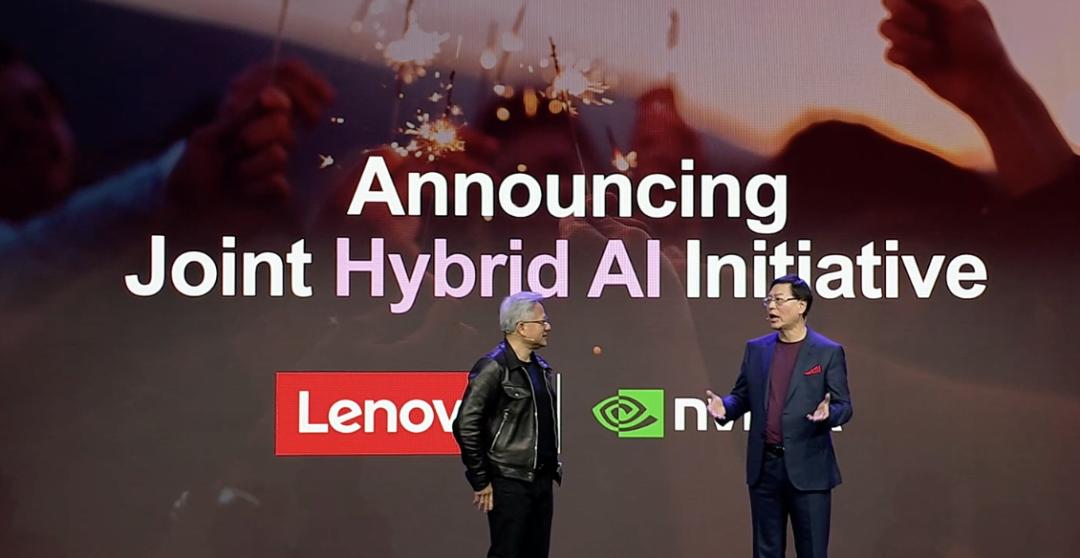
Jensen Huang and Yang Yuanqing announce hybrid AI initiative | LenovoThese actions and perspectives from tech giants align with data from research institutions like Canalys.
Data shows that 'starting from 2025, the adoption of AI-enabled PCs will accelerate, accounting for about 60% of total PC shipments by 2027.'
On the other hand, Intel is not standing still and is actively advancing its strategy in AI+CPU integration.
Recently, Intel announced a collaboration with Lenovo to "bring AI to everyone," stating that "AI will fundamentally transform and reshape the PC experience." "Intel is preparing for this new era by launching its Core Ultra processors, codenamed Meteor Lake. This marks Intel's first processor with a built-in Neural Processing Unit (NPU), delivering high-efficiency AI acceleration and local inference capabilities for PCs." "The company plans to release its first 5th Gen Intel Xeon processors and Core Ultra processors on December 14 this year, advancing AI scalability across client, edge, network, and cloud workloads."
After a brief period of calm, chip giants have re-entered a "Warring States" phase, revitalizing the previously declining PC CPU market. Behind this CPU battle lies the rapid advancement of AI technology, which is the true "hidden target" these tech giants are aiming for.
